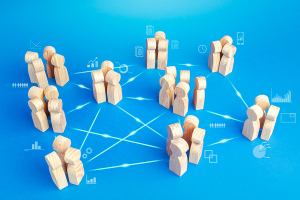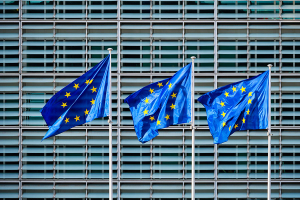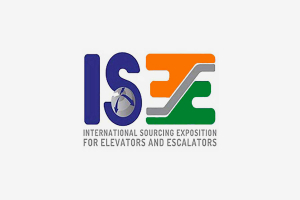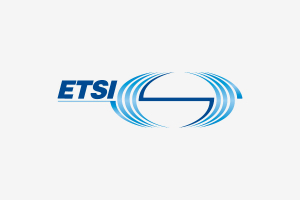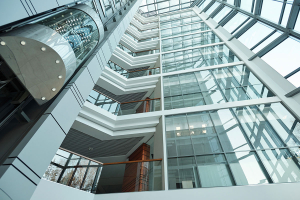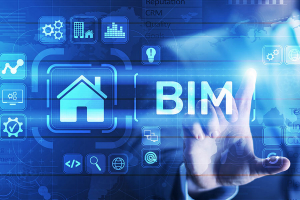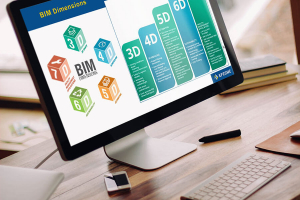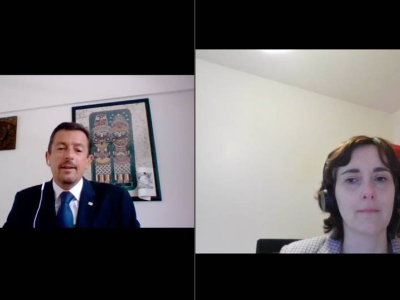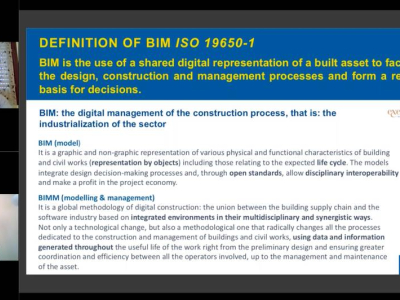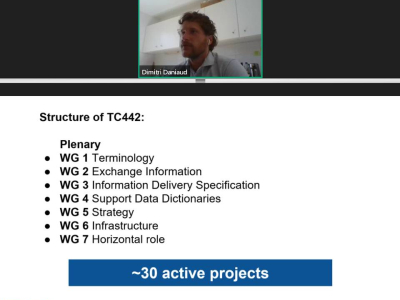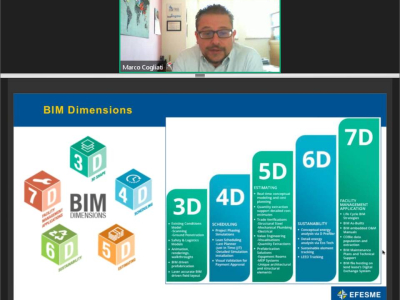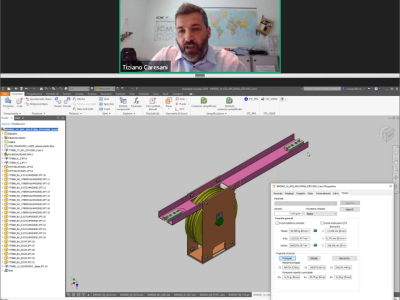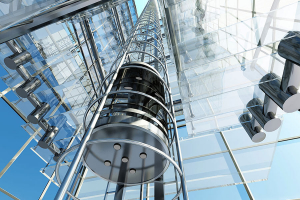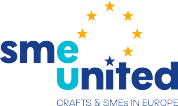EFESME Board of Directors and General Assembly
The latest meeting of the Board of Directors and General Assembly saw the Federation taking important decisions for its future.
On the occasion of the EFESME Board of Directors and General Assembly, which took place online on Monday 21 June 2021, the Federation and its members partially re-elected the previous administrative positions, confirming Mr. Massimo Bezzi (Italy) as President of EFESME, Mr. Damyan Petrov (Bulgaria) as Vice-President, and Mr. Luciano Faletto (Italy) as Secretary General, in continuity with the important results achieved so far.
In the role of second Vice-President of the Federation, the EFESME team was joined by Mr. José María Compagni Morales, coordinator of FEPYMA, the Spanish member of the Federation. With his contributions, EFESME aims to develop even more activities and projects for lift SMEs.
EFESME and its members would also like to thank Mr. Marcel Boutillier (France) for his role as Vice-President during the last years, and previously as President, and for his contribution in developing the Federation's projects in support of lift SMEs.
During the meeting, there was also the opportunity to discuss the Federation's activities since June 2020 with members and their SMEs, SBS, SMEunited and other European stakeholders with whom EFESME regularly cooperates.
Despite the difficulties due to the global situation, the members expressed great satisfaction with the results achieved by EFESME so far, and have already started to plan future activities and events to continue supporting lift SMEs, to build an increasingly SME-friendly working environment at national, European, and international level.
EFESME replied to the EC open consultation on the revision of the Machinery Directive 2006/42/EC
Following the publication by the European Commission of a public consultation on the Machinery Directive 2006/42/EC and its future revision, EFESME presented a series of comments aimed at exemplifying and presenting the position of lift SMEs on this issue, also considering the Commission's proposal to transform the Directive into a European Regulation.
The EFESME comments focused mainly on the Essential health and safety requirements (EHSRs), the availability of instructions for use, and the cross-cutting impact of digitalisation, all of which are crucial and fundamental aspects for the work and daily activities of SMEs.
Furthermore, the Federation's position is not against the idea of the Directive becoming a Regulation, but in this case it will be necessary to ensure that the text is as SME-friendly as possible, so that it does not become a burden on their daily activities, but rather an additional tool to allow them to thrive and work in the most effective and satisfactory way.
The comments have been developed by the Federation's team of technical experts, with the collaboration of SBS - Small Business Standards, of the European DIGITAL SME Alliance and of their experts.
ISEE campaign to acknowledge the lift industry
As part of EFESME's activity to promote new and interesting initiatives in support of the lift sector not only at European level, the Federation would like to bring to the attention of its readers an interesting initiative put in place in India to raise awareness of the lift sector.
Through a series of colourful and high-impact posters, in fact, ISEE wanted to remind the fundamental importance that the sector has played, in a constant and invisible way, to ensure that the world continued to move as well as possible even during the pandemic crisis.
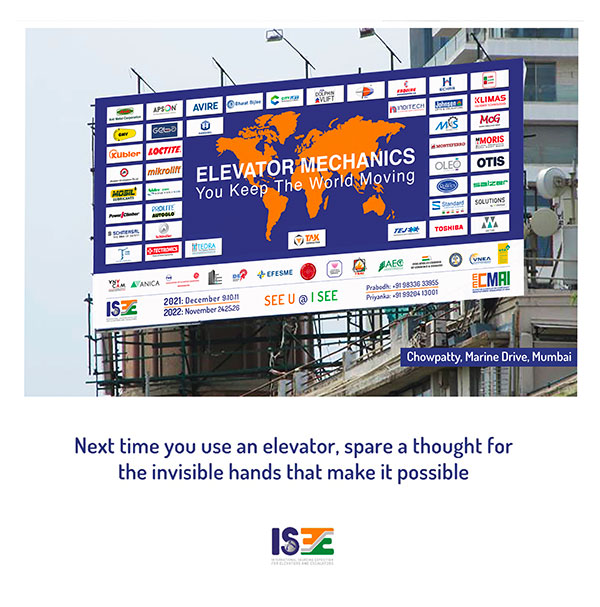
In the words of TAK Mathews, Director: “As humanity reeled under the onslaught of COVID-19, the world applauded the millions of essential services workers who tirelessly toiled to sustain us. We, rightfully so, clapped for the healthcare and support workers, sanitation workers, grocery staff, delivery boys, bus drivers, fire men, police force and so on.
Amidst all the applause and outpouring of gratitude, the world overlooked the hundreds of thousands of invisible hands who ensured the working of the elevators and escalators that sustain almost every aspect of our lives. Without the tag of essential services, elevator personnel rarely received priority for facilities and vaccinations or government support prioritised for designated essential service workers.
Unrecognised as essential, elevator mechanics have been charged for lock down violations as they moved from building to building and elevator to elevator to keep the world moving. There are mechanics who through their on-duty exposure have got infected and in turn infected their families and sadly have also succumbed to this deadly virus.
Recognising this reality and to right this grievous wrong, ISEE has launched the public campaign “ELEVATOR MECHANICS – You Keep The World Moving”. It is but a small step to urge the world to acknowledge the elevator mechanic who has been taken for granted.”
ISEE (International Sourcing Exposition for Elevators & Escalators) is a show being held in Mumbai. For further information please email This email address is being protected from spambots. You need JavaScript enabled to view it.
During the first half of 2021, ETSI published a document of great relevance to the lift industry, namely the Technical Specification TS 103.735 "Smart Lift IoT System" (March 2021). The document is an evolution of the previous Technical Report TR 103.546 on Smart Lifts (April 2020), and aims to lay a solid foundation for a possible future European standard on the subject.
The TS text is SME-friendly, which is great news for European SMEs that are increasingly working with the digital world and IoT in their daily activities. This important result was achieved also thanks to the role of rapporteur of the EFESME and SBS expert involved, Mr. Marco Cogliati, whose active participation ensured a favourable text for the SMEs he represents.
Considering the role that this TS will play in the development of a European standard, the participation of an SME expert in the writing of the TS is certainly very positive in order to make the future standard as SME-friendly as possible.
New Work Item TS 103.849 Smart Escalators IoT Systems
ETSI Smart M2M has announced a New Work Item, Technical Specification TS 103.849 on Smart Escalators into an IoT System.
The document, which is a twin of the Technical Specification TS 103.735 "Smart Lift IoT System" and continues on the path set by the Technical Report TR 103.546 on Smart Lifts, is of great interest for European lift SMEs involved in the sector, and will include information on signals, alarms and commands, communication system, and system interoperability.
Moreover, together with the previously mentioned TS and TR, it is intended to serve as a basis for developing an eventual future European standard on the important matter of IoT Systems.
Mr. Marco Cogliati, EFESME & SBS expert within ETSI Smart M2M, has been chosen as rapporteur also for this new document, after the excellent work done in the very same role for TS 103.735 and TR 103.546. Mr. Cogliati's work and role as rapporteur will ensure that the positions of European lift SMEs are always taken into account, which is of utmost importance for the continuous protection of their interests and to support a SME-friendly standardisation and supporting documentation, and to boost their daily work.
EFESME attends the first online Lifts Experts’ Day, organised by AFAG and VfA Interlift
At the kind invitation of VfA Interlift and AFAG, EFESME and its President, Mr Massimo Bezzi, took part in the first online Lift Experts' Day, organised on the dates of the postponed Interlift 2021. The event, an entire day dedicated to various panels touching on the most diverse topics, from standardisation to post-covid, was an important first opportunity to meet again after many months, to discuss in person issues of common interest, and to give the right impetus to the next edition of Interlift, which will take place in April 2022.
A panel was dedicated to the latter, during which the organisers intervened to illustrate how the organisation of the trade fair is proceeding in the best possible way, in order to guarantee an exciting edition, with a particular and precise focus on safety.
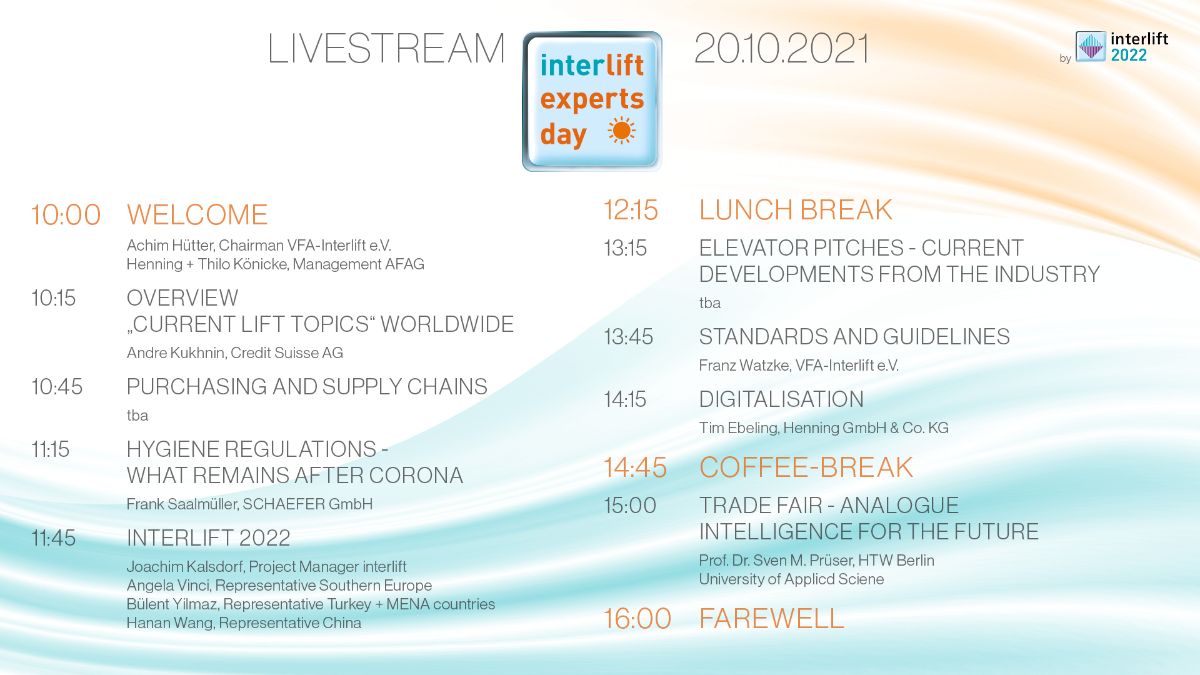
The contents of the event have been particularly interesting and involving; to give some examples, the presentation of Mr. Andre Khuknin (Credit Suisse AG) on the global lift market trends has given a different view to the sector, while the speech of Mr. Tim Ebeling (Henning GmbH & Co. KG) on the digitalisation, has underlined once more how the digital is a more and more unavoidable aspect for the elevator industry, especially and also in times of post-covid. Mr Frank Saalmuller (SCHAEFER GmbH) spoke on the latter topic, while Mr Franz Watzke (VFA-Interlift e.V.) summarised the latest developments in the world of standardisation and how this could evolve.
Finally, the panel on communication methodology by Prof. Dr. Sven M. Pruser (HTW Berlin) highlighted, once again, the necessity of meeting in person, certainly in complete safety, and how human relations are fundamental in the work and association activities of all profiles involved.
- The recording of the event will be available HERE in the coming weeks
In the words of the President of EFESME, Mr. Massimo Bezzi: "It was a very successful event, a necessary moment of meeting after so many months to give launch and stimulus to all the people involved in view of the 2022 edition of Interlift. It was a nice and interesting opportunity to meet again and talk about what is necessary, also in an informal way thanks to the excellent organisation of AFAG and VfA Interlift.”
SBS Lift Forum on the BIM in the lift sector
BIM – Building Information Modelling – is a new way of thinking about and organising the planning and subsequent construction of a building, which continues throughout the life cycle of a construction. It is a method of digitally sharing the data of a building and all its components, creating an integrated three-dimensional model accessible to all actors involved in its construction.
In some ways revolutionary, BIM is already leading and will continue to lead to major changes in the construction sector and related sectors such as the lift industry.
For these reasons, EFESME and SBS have decided to organise a first introductory forum to learn more about what BIM is and how it will become part of the lift sector in the coming years.
The forum is open to all interested persons and aims to be the first of many occasions to discuss, study and understand BIM, in order to get the best out of this new system.
The event will consist of several sessions, to address the BIM topic from several points of view. The first session aims to give a more general idea of what BIM is, how it is used, and what is happening in the world of European standardisation regarding such an important revolution in different sectors and how to make it as standardised and accessible as possible. A standardised and SME-friendly development of BIM is the best result for all involved, and to be sure that this new methodology supports and enables SMEs to flourish, without causing further obstacles.
The second session will go into more detail within the lift sector, to give a first introduction to how BIM will impact the daily activities of companies, especially lift SMEs.
In fact, it is essential that lift SMEs immediately understand the extent of the changes that BIM will bring to their sector: a change in method and mentality, which will influence both the work of those who produce lift components and those who install and maintain them.
On 27 May, EFESME and SBS organised the annual edition of the SBS Lift Forum, this year dedicated to BIM - Building Information Modelling and the impact it is already having and will have in the near future on SMEs, of course with particular attention to lift SMEs that EFESME represents and supports. This methodology, which can be defined as revolutionary, will affect the construction sector and parallel sectors, and will bring about important changes in the lift sector, both in production and in maintenance and sales.
Once again organised digitally due to the current situation, the Forum saw three thematic sessions focused on specific aspects of BIM: what it is and how it has developed; what impact it will have on SMEs in the lift sector; how European standardisation on the subject is evolving and what to expect.
The idea behind the forum, in fact, was to give a first introduction to BIM from different points of view, also in order to understand its complexity.
This aspect, as well as the importance of BIM for SMEs and the need to be on top of this crucial issue, was the leitmotif of the introductory speeches by EFESME President, Massimo Bezzi, and SBS Director, Maitane Olabarria Uzquiano. Both placed particular emphasis on the importance of providing the necessary information to SMEs so that they can thrive using this innovative technology.
The first session was dedicated to BIM per se, in order to give the participants, almost all SMEs in the lift sector, but also journalists from specialist publications, a first detailed introduction to what BIM is, how it has developed and why.
This session first featured Maria Grazia Marchi and her colleague Mattia Longhi, with years long experience on BIM, who opened the technical part of the event by explaining how building design has evolved from the drafting machine to BIM, why this has happened and what opportunities it will open up in the future for all workers involved in a BIM project. Of particular interest was also the digital aspect on which BIM is based, which can be both a potential for evolution and a problem for SMEs approaching the subject. Nevertheless, Marchi and Longhi's speech was encouraging towards SMEs, which have the tools to get the best out of this revolutionary methodology.
An introduction to BIM - Building Information Modeling
Next, Dimitri Daniaud, the SBS expert on BIM participating in the CEN-CENELEC TC 442 dedicated to this technology, explained in more detail what is happening in the construction sector regarding BIM and standardisation.
The construction sector is parallel and interconnected with the lift sector, so it is crucial for SMEs working in the latter to know how the situation is evolving and what new developments and changes to expect in the near future.
BIM in the construction sector : what's going on?
Both presentations, as well as the speeches of the three speakers, gave a lot of interesting food for thought and work, which will allow EFESME, its members and the experts involved to have a solid base from which to start to become more and more interested in BIM, and to see how they can support and help lift SMEs to embrace this new methodology without running into difficulties and problems.
The second session, the more practically technical one, focused on BIM in the lift sector. EFESME and SBS experts Caresani and Cogliati, both already involved at European level in standardisation activities regarding platforms, digitalisation and Smart Lifts, explained to the audience and participants how BIM is evolving and expanding within the lift sector, what changes it is bringing and what this means for a lift SME. The two experts approached the topic from both a theoretical and a practical point of view, illustrating both where and how it is possible to find information for lift products that are already part of an online BIM library, with all their characteristics; and, this being fundamental for SMEs, how lift projects will change, what level of information is needed and how. This information is highly crucial for lift SMEs to have a solid first basis for starting working with BIM.
Caresani and Cogliati also identified a number of opportunities and risks for SMEs using BIM, emphasising a key point: the BIM methodology is here to stay, and SMEs need to start now to understand how to approach and make the most of it.
This session finally ended with a short speech by Marchi to give more practical suggestions on how an SME can approach BIM, what steps to follow and what aspects to consider first to make sure they are ready for the challenge.
State of the art and future challenges for the lift sector
Finally, the third and last session focused exclusively on European standardisation. Thanks to the intervention of Paul Surin, IBM expert very active within CEN TC442 and with a considerable experience in BIM, construction and the digital world, it was possible to better understand why it is necessary to digitise construction processes, how this should be happening in a standardised way, what CEN-CENELEC is doing in this regards, and what are the advantages that such a project will bring in the near future to the actors involved, especially SMEs.
Why manufacturers need to digitize and structure their data
This last focus on standardisation is particularly interesting for both SBS and EFESME, as they are already actively and directly involved in European and international standardisation, on BIM as on many other topics: just as SBS experts are already present in the working groups that matter for BIM in the construction sector, it is equally desirable that the two associations deepen these activities to involve also the parallel lift sector.
EFESME and its President would like to congratulate the speakers of the event, and thank them for their efforts in organising and participating in an interesting, interactive and informative event for lift SMEs, who are just starting to approach BIM and need more practical knowledge. They would also like to thank SBS - Small Business Standards, its Director and team for their continuous support in developing standardisation activities and organising these extremely important information events.
Smart Lifts towards a future European standard

In April 2020, ETSI published the technical report TR 103.546 on Smart Lifts, the first document that described, by means of a series of detailed use cases, the behaviour of "connected lifts" in their current state.
After the dissemination of the technical report, ETSI's Technical Committee ‘Smart M2M’ thought it was appropriate to go deeper into the technical aspects related to data exchange from the lift to the outside world. This is because, today, vertical mobility, understood as everything related to lifts, platforms, and, broadening the definition, escalators and moving walkways, is becoming an increasingly crucial aspect in data and IoT connections, for example in Smart Building within the Smart Cities concept. Both of these elements use and develop around IoT and data, and it is therefore necessary to know and understand better how a Smart Lift interacts with data and the (digital) environment in which it is located.
Later on, the SBS, EFESME and ETSI experts worked on the drafting of the technical specification TS 103.735, published in March 2021, which is a much more complete and detailed document than the precedent TR, and which allows to better understand what are the technical aspects to be addressed in the development of an IoT system for lifts. Starting from the use cases in the TR and going deeper into them, the experts have designed a series of architectures and configurations applicable to the data exchange between lifts and IoT systems; in this process the communication towards third party systems (sensors, devices, external software) and data exchange platforms was included.
The work started from the basic concept that data can come from the central unit of the lift (the switchboard) and from adjacent systems. Speaking of architecture and supported configurations, an interesting part was developed to integrate groups of lifts, thus including complex transport systems that are generally found in large buildings and are normally managed by a single switchboard.
Moreover, by creating these "open" architectures, it has been possible to apply the concepts contained in the TS not only to recently produced lifts with new technologies, but, with the addition of some devices, to receive data also from older generation systems, an aspect particularly important for maintenance SMEs.
In the TS, a specific chapter analyses and summarises all the data exchanged towards the outside world, i.e. signals, alarms, errors and other information related to the lift. The TS contains a series of tables that group together, according to the type of data, all the characteristics required by the system to be able to process the data itself, such as: identification and unique data to recognise the lift; geolocation; administrative data and installation characteristics; regulatory references; electrical data; movement signals, fire alarm, signals from the two-way communication system. These are just some of the data mapped in the TS.
The documentation produced to date is intended primarily as a tool for companies that want to get in touch with these new digital systems; the use of the TS can make it easier for the world of vertical mobility to approach the creation of integrated IoT systems.
Now the SmartM2M technical committee is thinking about the realisation of a "twin" TS dealing with stairs and moving walkways. Once this last work is completed, and this aspect is extremely important for the SMEs that SBS and EFESME represent, there will be the concrete possibility within ETSI and SmartM2M to move on to the development of a European standard dedicated to the world of vertical mobility, Smart Lifts, and the Internet of Things.
Small Business Standards (SBS) is the European association representing and supporting small and medium-sized companies (SMEs) in the standardisation process, both at European and international levels
This article only reflects Small Business Standards' views. The European Commission and the EFTA Member States are not responsible for any use that may be made of the information it contains


Mandated and co-financed by the European Commission & EFTA Member States
